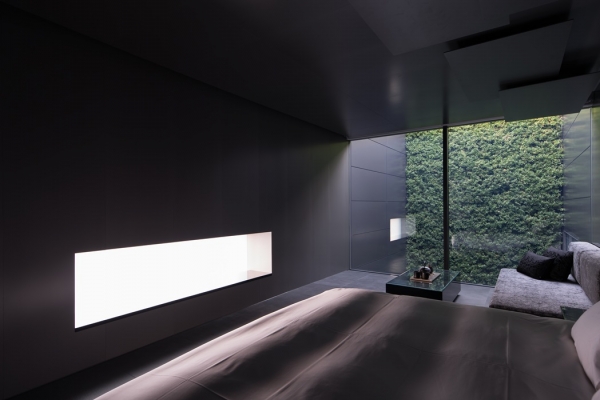
Kyo-machiya’s revival in the modern age: where tradition and modern technology intersect in a luxurious space, MOGANA
2019.03.27
The deep and narrow site is typical in the old city context of Kyoto, famously nicknamed “Unagi no netoko”, or “the eel’s nest”.
MOGANA, designed by our member Takashi Yamaguchi, which is arranged with topological symmetry between external and internal void, with vertical void structured as a linear continuum. (Design and awareness of nothingness, or the void, is important in Eastern philosophy.)
The building takes a step back away from the street. Between itself and the urban context, there is a garden. The entry sequence is inspired by the long passage way in a Kyo-machiya. The traditional design of latticework in a machiya façade is being reincarnated into a high-tech long corridor, where the guests would be greeted with light and music produced by latest technology.
In the 1st and 2nd floors, different views come into play. First, in the concierge room, a horizontal space leading the the front garden; then come the vertical void and the latticework extension. The guests would check-in at the concierge room, enjoying a view of the Japanese garden planted with camellia, arrow bamboo, and paved with black slate from Kumano in Mie Prefecture. After checking in, the guests would walk through the latticed corridor, heading towards the lobby and library, while being absorbed into a video stream showcasing Japan’s Four Seasons.
Small inner courtyards called “Tsuboniwa” would be placed in a Kyo-machiya, bringing in light and climate control into the long and narrow sites. Such is the traditional wisdom of the people in Kyoto, and this project employs and reinterprets this wisdom.
While traditional gardens are limited to the horizontal ground, the Tsuboniwa here is created vertically, with green plants sown on a wall. Such greenery can be enjoyed from all the rooms, while natural light and wind are being directed to every room from this open void. Rooms in the 6th, 7th and 8th floors, directly facing this greenery, are the most luxurious “Ozashiki” rooms in the hotel. These most luxurious rooms all have customized decors with different materials being used in the walls, floors and ceilings; and one can enjoy the different atmospheres.
Rocks laid in the bottom of this vertical Tsuboniwa, and fog is created in between the rocks. A micro aspect of the climate of Japan is being condensed in this small space. The mist changes between summer and winter, with light streaks appearing through the fog at night.
Through these different design efforts, we hope to deepen the guests’s understanding of culture in Kyoto, as well as giving an experience of an integration between the the past and the future of Japan.
Our wish is for the guests to gain a true sense of Japan.
For more information: https://yadomogana.com/

